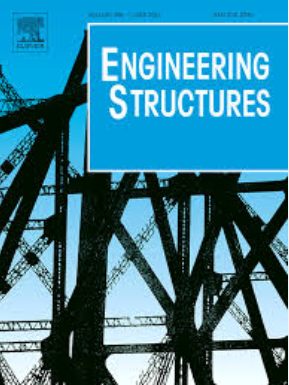Automated machine learning exact dirichlet boundary physics-informed neural networks for solid mechanics
IF 5.6
1区 工程技术
Q1 ENGINEERING, CIVIL
引用次数: 0
Abstract
While Physics-informed neural networks (PINN) have made significant progress in solving partial differential equations (PDE), conventional PINN may have convergence issues due to spectral bias, the requirement of loss balancing, and a significant number of trainable weights. Exact Dirichlet boundary condition Physics-informed Neural Networks (EPINN) was developed to solve forward problems in solid mechanics by applying tensor decomposition, approximating distance function, and the principle of least work, achieving more than 127 times speedup compared to PINN. However, the sensitivity of hyperparameters of the PINN framework is less reported. To merge the gap, this study develops the mesh-free 3D Bayesian-Optimization Tree-Structured Parzen Estimator (BO-TPE) Automated Machine Learning EPINN to solve solid mechanics problems without labelled data of the solution field. Developed based on Nvidia modulus platform, the Automated Machine Learning EPINN (AEPINN) can achieve more than 20 times speedup for 2D plane stress problems and four times speedup for 3D bracket problems compared with the EPINN architecture. Compared with conventional PINN, AEPINN model achieved more than 200 times speedup for a plane stress problem and 400 times speed up for a bracket problem. For a two-span three-story frame composed of beams, columns, and slabs, the AEPINN model can simulate the frame displacement deformations comparable to ABAQUS results with adequate accuracy and speed with GPU accelerated. Optimized hyperparameters AEPINN can approach a hyperelastic cube rubber case within 60 s compared with Abaqus results of Mooney-Rivlin constitutive law. The comparison between single-precision and double-precision training is also illustrated. The influences of hyperparameters in the adopted EPINN framework are examined accordingly.
求助全文
约1分钟内获得全文
求助全文
来源期刊

Engineering Structures
工程技术-工程:土木
CiteScore
10.20
自引率
14.50%
发文量
1385
审稿时长
67 days
期刊介绍:
Engineering Structures provides a forum for a broad blend of scientific and technical papers to reflect the evolving needs of the structural engineering and structural mechanics communities. Particularly welcome are contributions dealing with applications of structural engineering and mechanics principles in all areas of technology. The journal aspires to a broad and integrated coverage of the effects of dynamic loadings and of the modelling techniques whereby the structural response to these loadings may be computed.
The scope of Engineering Structures encompasses, but is not restricted to, the following areas: infrastructure engineering; earthquake engineering; structure-fluid-soil interaction; wind engineering; fire engineering; blast engineering; structural reliability/stability; life assessment/integrity; structural health monitoring; multi-hazard engineering; structural dynamics; optimization; expert systems; experimental modelling; performance-based design; multiscale analysis; value engineering.
Topics of interest include: tall buildings; innovative structures; environmentally responsive structures; bridges; stadiums; commercial and public buildings; transmission towers; television and telecommunication masts; foldable structures; cooling towers; plates and shells; suspension structures; protective structures; smart structures; nuclear reactors; dams; pressure vessels; pipelines; tunnels.
Engineering Structures also publishes review articles, short communications and discussions, book reviews, and a diary on international events related to any aspect of structural engineering.
 求助内容:
求助内容: 应助结果提醒方式:
应助结果提醒方式:


